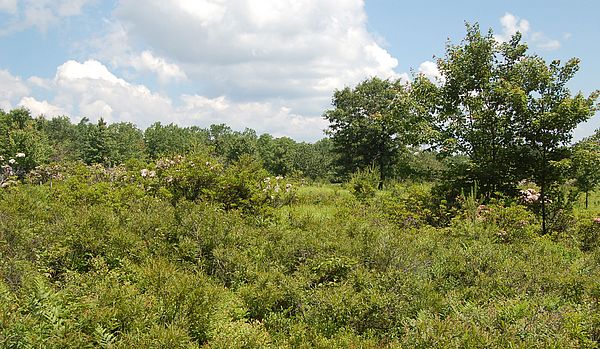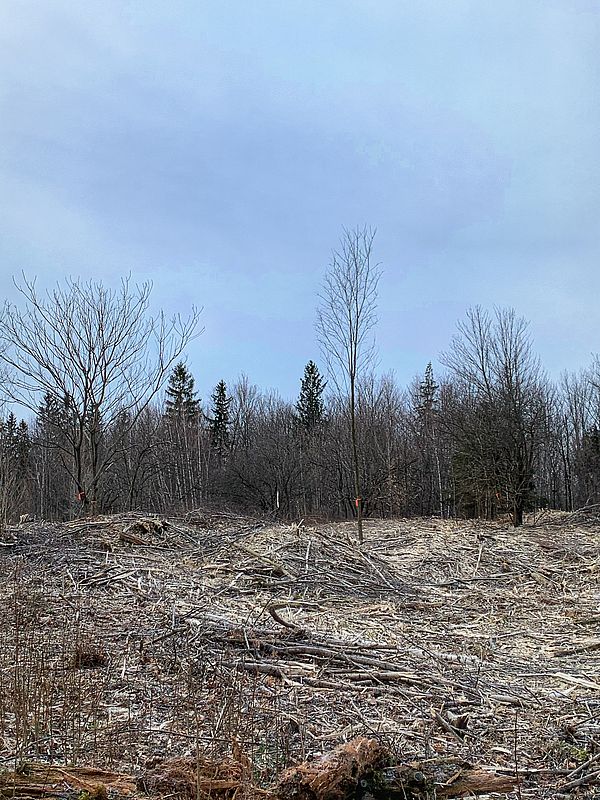I was recently walking a landowner’s property, discussing the various opportunities we were seeing to improve or enhance wildlife habitat on the parcel, as well as where the parcel sat in the larger landscape matrix of fields and forests. Their grandson was tagging along, more interested in finding insects than in our discussions of age class diversity and the merits of various soft species. His attention, however, became laser focused when I offered that perhaps a Brontosaurus was an appropriate mechanism for achieving the desired outcome before us—in this case developing a young forest condition (or ‘early successional habitat’) favored by species like ruffed grouse, American woodcock, or chestnut-sided warbler. With eyes the size of saucers he looked up anxiously waiting to hear where we found a dinosaur and how soon we could get it there. Realizing where his head went, I had to explain that while unfortunately we weren’t going to be able to recreate the Jurassic period on their back forty, we just might be able to get something almost as cool in there. What’s almost as cool as dinosaurs to the young imagination you ask? Well, heavy machinery of course.
Early successional habitat can be described as habitat with vigorously growing grasses, forbs, shrubs and trees which provide excellent food and cover for wildlife, but need disturbance to be maintained, as this forest type losses much of its critical structure and function when it reaches 15-20 years old. Examples of early successional habitats can include grasslands, old fields or pastures, shrub thickets, and (most pertinent to our work) young forests. If these habitats are not mowed, brush hogged, burned, or cut in some fashion they will eventually become a more mature forest over time. Grasslands will revert to old fields, old fields will eventually grow into young forest, and young forest will grow into mature forest. This process is referred to as succession. As such, these areas are often referred to as early-successional habitats. Don’t get me wrong, old forests are key (keep your eyes peeled for a future newsletter piece on where Old Forests fit in our vision) but it’s the diversity of habitats which make our landscape so rich to the myriad of species that call them home. Early successional habitats are part of that diversity.
So, where’s the Brontosaurus come in? Well, a ‘bronto’ is a common name for a piece of equipment which helps us maintain some of these habitats in the most efficient and effective way possible. These machines, typically with the same body as an excavator, use a chipper (or mulching head) on a long boom arm to grind standing trees all the way down to the ground, leaving piles of mulch in its wake. While this may surface memories of Disney’s Fern Gully in anyone reading this who came of age in the early 1990s, the machine is incredibly effective when working in stands of young aspen or grey birch. Imagine standing with your chainsaw, looking over two acres populated by tens of thousands of 3-4” stems which need to come down. My back gets sore just thinking about it. This machine takes what might be a weeks’ worth of work and knocks it out in a manner of hours. Now, a caveat—we generally cut (or grind) everything in these areas. We tend to leave 10-15% of standing trees to maintain high perches and enhance structural diversity, as well as retain sources of mast in the stand like the apple trees so common in our old, abandoned pastures which have regrown to young forest. We also like to knock the tops out or some trees, but leave them standing to recruit dead snags for cavity nesters, as well as to contribute to coarse woody debris volumes. When the work is done nature quickly takes over and within a season the area is once again lush with new growth as the process starts all over again.
The Brontosaurus is just one tool in our box, but it’s an important one, so next time you wonder about the connection a little chestnut-sided warbler has to dinosaur, remember the Brono, and know that’s fine to embrace your inner kid and let out a wide-eyed ‘wow’ when you see these machines in action.

